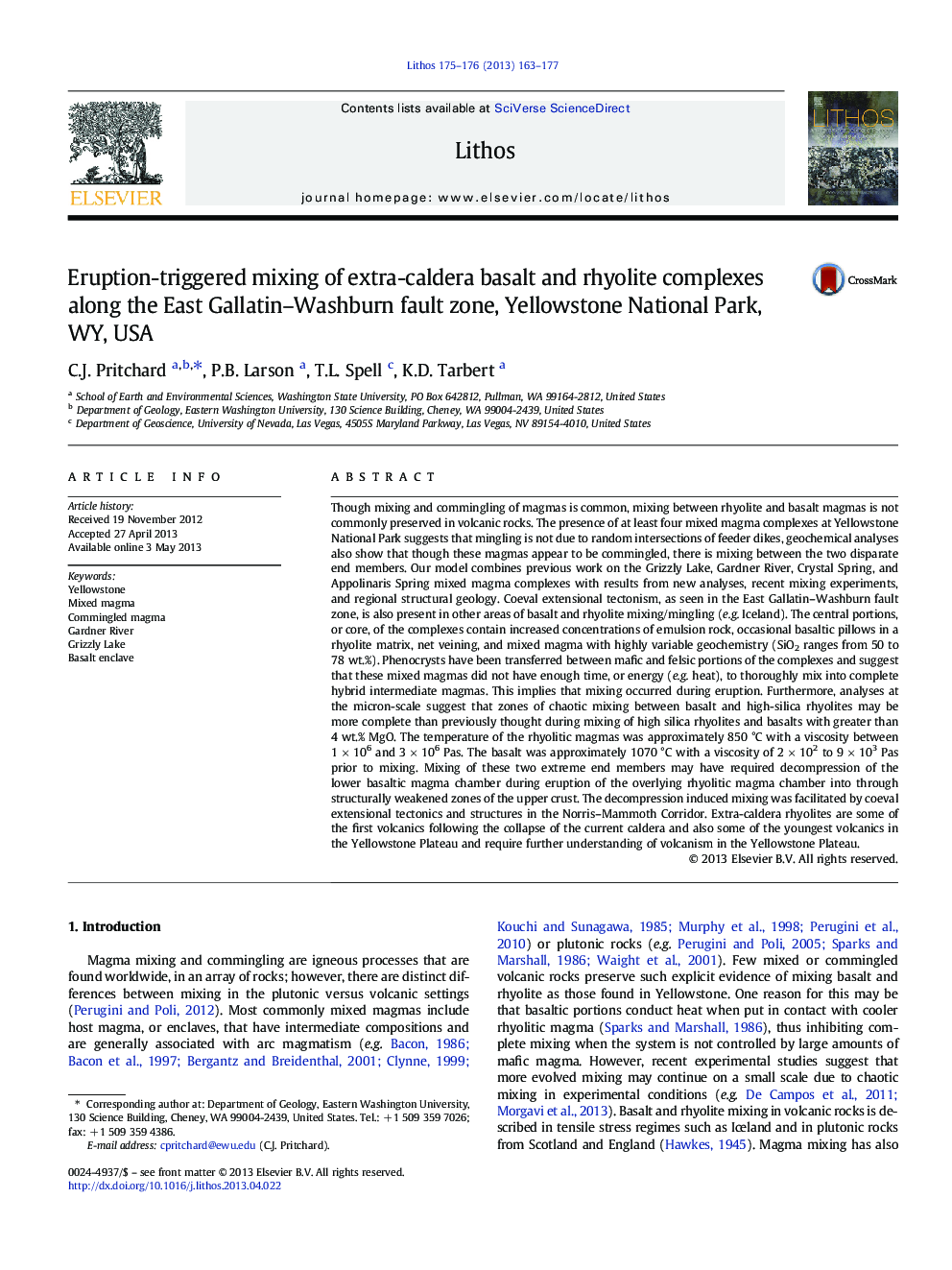| کد مقاله | کد نشریه | سال انتشار | مقاله انگلیسی | نسخه تمام متن |
|---|---|---|---|---|
| 6440887 | 1638689 | 2013 | 15 صفحه PDF | دانلود رایگان |
عنوان انگلیسی مقاله ISI
Eruption-triggered mixing of extra-caldera basalt and rhyolite complexes along the East Gallatin-Washburn fault zone, Yellowstone National Park, WY, USA
دانلود مقاله + سفارش ترجمه
دانلود مقاله ISI انگلیسی
رایگان برای ایرانیان
کلمات کلیدی
موضوعات مرتبط
مهندسی و علوم پایه
علوم زمین و سیارات
ژئوشیمی و پترولوژی
پیش نمایش صفحه اول مقاله

چکیده انگلیسی
Though mixing and commingling of magmas is common, mixing between rhyolite and basalt magmas is not commonly preserved in volcanic rocks. The presence of at least four mixed magma complexes at Yellowstone National Park suggests that mingling is not due to random intersections of feeder dikes, geochemical analyses also show that though these magmas appear to be commingled, there is mixing between the two disparate end members. Our model combines previous work on the Grizzly Lake, Gardner River, Crystal Spring, and Appolinaris Spring mixed magma complexes with results from new analyses, recent mixing experiments, and regional structural geology. Coeval extensional tectonism, as seen in the East Gallatin-Washburn fault zone, is also present in other areas of basalt and rhyolite mixing/mingling (e.g. Iceland). The central portions, or core, of the complexes contain increased concentrations of emulsion rock, occasional basaltic pillows in a rhyolite matrix, net veining, and mixed magma with highly variable geochemistry (SiO2 ranges from 50 to 78 wt.%). Phenocrysts have been transferred between mafic and felsic portions of the complexes and suggest that these mixed magmas did not have enough time, or energy (e.g. heat), to thoroughly mix into complete hybrid intermediate magmas. This implies that mixing occurred during eruption. Furthermore, analyses at the micron-scale suggest that zones of chaotic mixing between basalt and high-silica rhyolites may be more complete than previously thought during mixing of high silica rhyolites and basalts with greater than 4 wt.% MgO. The temperature of the rhyolitic magmas was approximately 850 °C with a viscosity between 1 Ã 106 and 3 Ã 106 Pas. The basalt was approximately 1070 °C with a viscosity of 2 Ã 102 to 9 Ã 103 Pas prior to mixing. Mixing of these two extreme end members may have required decompression of the lower basaltic magma chamber during eruption of the overlying rhyolitic magma chamber into through structurally weakened zones of the upper crust. The decompression induced mixing was facilitated by coeval extensional tectonics and structures in the Norris-Mammoth Corridor. Extra-caldera rhyolites are some of the first volcanics following the collapse of the current caldera and also some of the youngest volcanics in the Yellowstone Plateau and require further understanding of volcanism in the Yellowstone Plateau.
ناشر
Database: Elsevier - ScienceDirect (ساینس دایرکت)
Journal: Lithos - Volumes 175â176, 15 August 2013, Pages 163-177
Journal: Lithos - Volumes 175â176, 15 August 2013, Pages 163-177
نویسندگان
C.J. Pritchard, P.B. Larson, T.L. Spell, K.D. Tarbert,